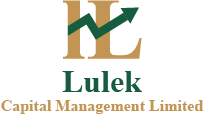Investing in today’s dynamic financial markets can be both exciting and daunting. To navigate this landscape successfully, it’s crucial to stay informed about the latest market trends. These trends not only provide insights into potential investment opportunities but also help manage risks effectively. In this article, we’ll explore the importance of staying attuned to market trends and how it can boost your confidence as an investor.
The Significance of Market Trends
Market trends are the heartbeat of the financial world. They reflect the collective actions and sentiments of investors, traders, and institutions. Here’s why they matter:
- Informed Decision-Making: By analyzing market trends, investors can make informed decisions. Whether you’re considering stocks, bonds, cryptocurrencies, or real estate, understanding market trends provides valuable context.
- Risk Management: Trends can signal potential risks. Recognizing when a market is overvalued or experiencing a bubble, for example, can help you adjust your portfolio to mitigate potential losses.
- Identifying Opportunities: Bull or bear markets, emerging industries, and disruptive technologies can present investment opportunities. Recognizing these trends early can position you for profitable investments.
How to Stay Informed
Keeping tabs on market trends doesn’t require a crystal ball. Here are some practical strategies:
Use Technology: Leverage financial news websites, market analysis platforms, and mobile apps to access real-time data and insights.
Diversify Information Sources: Don’t rely on a single source. Follow respected financial news outlets, subscribe to market newsletters, and explore social media discussions among experts.
Consult Professionals: Financial advisors and investment experts can offer valuable insights and personalized guidance based on market trends.
Attend Webinars and Seminars: Many financial institutions and experts host webinars and seminars to discuss market trends. These events provide an opportunity to learn and ask questions.
Trends to Watch
While market trends can vary widely, here are a few areas worth keeping an eye on in the current financial landscape:
- Tech and Innovation: The tech sector, including artificial intelligence, blockchain, and clean energy, continues to shape markets. Keep an eye on companies driving innovation.
- Sustainability: Sustainable and socially responsible investing is gaining momentum. Companies with strong ESG (Environmental, Social, and Governance) practices are attracting attention.
- Cryptocurrencies: The crypto market remains highly dynamic. Monitor trends in major cryptocurrencies like Bitcoin and Ethereum, as well as emerging tokens and blockchain projects.
- Real Estate: The real estate market is evolving, with remote work and changing lifestyles impacting demand. Urban-to-suburban migration trends are worth considering.
Invest with Confidence
Staying informed about market trends is a powerful tool for investors. It enables you to make well-informed decisions, manage risks, and seize opportunities. Remember that investing is a long-term journey, and trends can change. A diversified portfolio that aligns with your financial goals and risk tolerance remains a prudent strategy.
In conclusion, investing with confidence starts with understanding market trends. By staying informed and adapting your investment strategy accordingly, you can navigate the ever-changing financial landscape with poise and increase your chances of achieving your financial goals. Happy investing!




